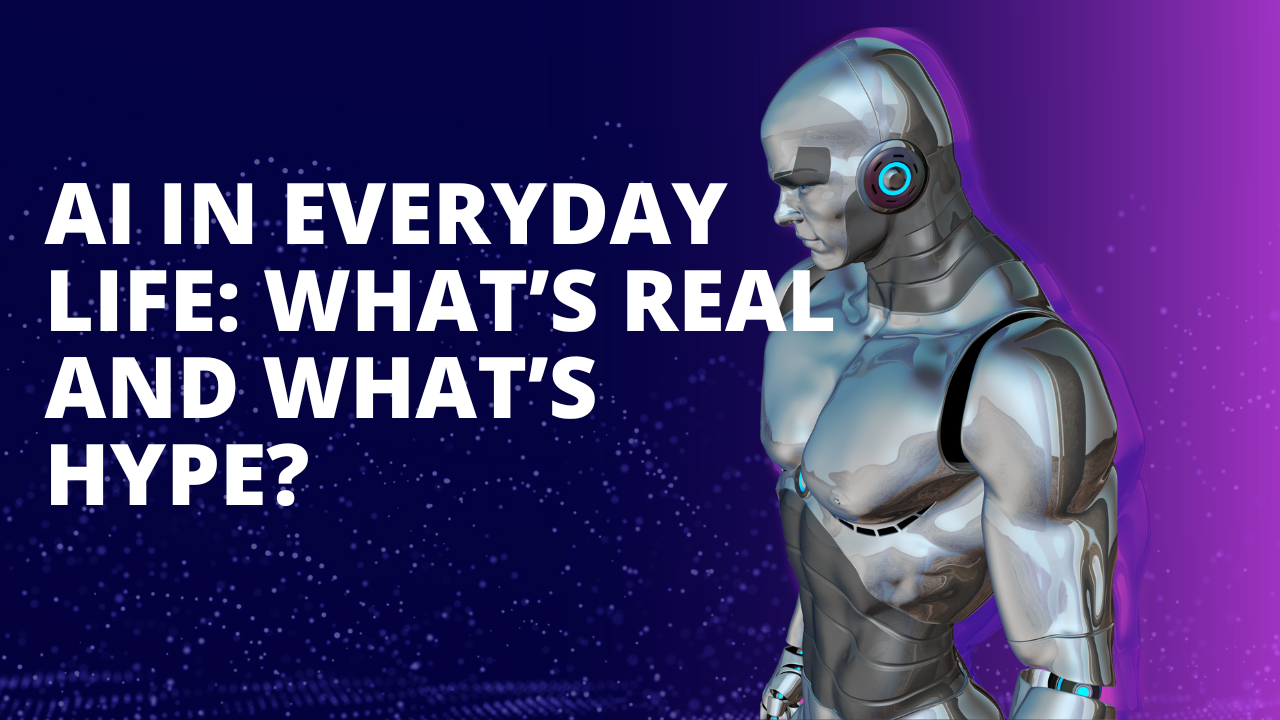AI, or computational intelligence, has quickly gone from being a part of fictional worlds to being a part of our everyday lives.Companies brag about how their products incorporate AI, such smartphones and refrigerators, and the news is full of stories about new, amazing things. But one thing is still clear: how much of AI’s role in our daily lives is really making a difference, and how much is just talk?
How AI Really Changes Everyday Life
Smart gadgets and digital aids
Many individuals now have AI-powered virtual assistants like Siri, Google Assistant, and Alexa in their homes and on their phones. These tools can set up appointments, handle smart home gadgets, and even answer queries. Natural language processing (NLP) lets them understand and reply in real time, which is distinct from scripted bots of the past. AI can help smart items like TVs, thermostats, and security systems figure out what customers prefer. For example, a smart thermostat can lower your energy expenditures by altering the temperature based on what it learns over time.
Ideas that are only for you
AI is what makes Netflix, Amazon, and Spotify able to propose things that are right for us. These systems look at how people respond, what they enjoy, and how they have used the system before to deliver them tailored experiences. It may seem simple, but the algorithms that run it involve complicated machine learning techniques.
AI in Medicine
In the field of health care, AI has proven useful. The technology helps doctors make choices more quickly and correctly. For example, chatbots can assist people figure out what their symptoms are, while new diagnostic technologies use pictures to discover diseases like cancer. AI is also employed in wearable gadgets that keep track of vital indicators and sound alerts when something goes wrong.
Getting around and offering transportation
Two navigation apps that employ AI to look at traffic patterns, recommend routes, and anticipate when you’ll get there are Google Maps and Waze. Uber and Careem are two ride-sharing businesses that utilise AI to find the best routes, set prices that change based on demand, and link drivers with passengers.
How to protect your PC and identify fraud
To uncover fraud, banks and other financial organisations employ AI to look at how people spend their money and mark transactions that seem suspicious. AI-powered cybersecurity technologies are also better at keeping consumers safe from phishing attacks, malware, and data breaches than normal software.
What is still hot?
Cars that can drive themselves
It’s fun to daydream about self-driving cars, but the truth is that they aren’t ready for regular use now. You still need someone to keep an eye on the present models, and they can only be utilised in certain places. A lot of the hoopla belies the truth that it’s really hard to develop an AI system that can deal with anything that happens on the road.
AGI (General AI)
People still generally guess what Artificial General Intelligence is, which is machines that can learn and think like people. AI has improved a lot, yet the models we have today are still not perfect. This means that they can do some things well, but they can’t think or reason like people do. The news is full of stories about AGI, but it won’t happen for a long time.
AI-Powered
A number of gadgets claim to be “AI-powered” to encourage people to buy them, but the only genuine capabilities they have are rudimentary automation or simple rule-based reasoning. A smart fridge that changes the temperature, for example, might not actually learn or be clever; it might only have rudimentary sensors.
AI Taking Over All Jobs
AI is taking over some jobs, but the assumption that it will take over all jobs is too powerful. AI is largely making new jobs instead of taking them away in most fields. AI may help a customer care person by giving them ideas for answers, but it wouldn’t be able to do the job for them.
Finding a Middle Ground Between Hope and Reality
Knowing how AI truly helps us make better decisions as customers and employees. Some businesses may want to join the “AI” bandwagon, although this can upset customers by making false promises. But if you don’t give AI enough credit for what it can do right now, you can miss out on real potential to be more creative and productive. We also need to consider about moral issues like AI model bias, data privacy, and openness, especially when AI is employed in sensitive sectors like recruiting, healthcare, and law enforcement.
Conclusion:
AI is absolutely affecting how we live, work, and talk to each other. It has remarkable and beneficial uses in the real world, such voice assistants and medical diagnostics. But it’s crucial to be able to tell the difference between true development and claims that are too great. AI isn’t magic, but it may be quite useful if you know how to utilise it. We utilise AI more and more every day. A balanced approach based on facts instead of hype will help us get the most out of it without falling for the lies. AI has a promising future, but we need to be careful and stay interested.

